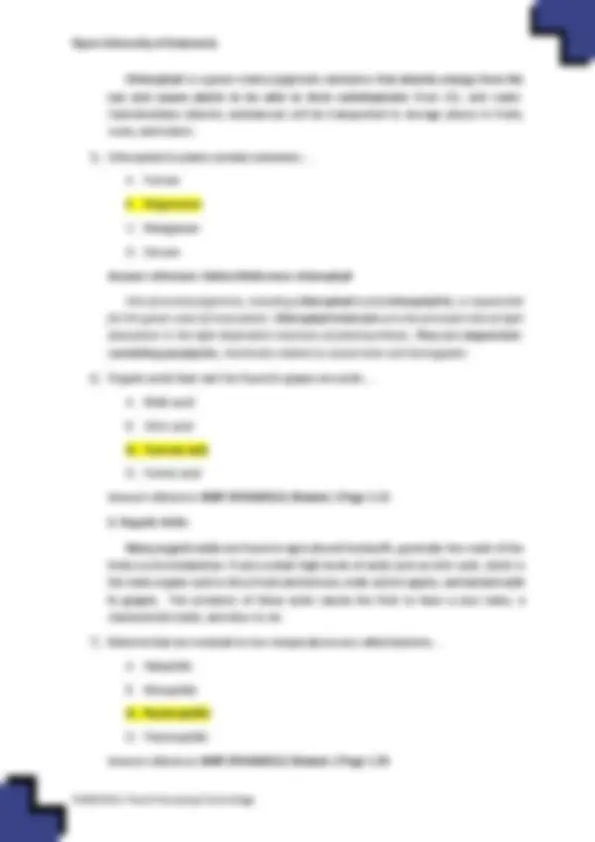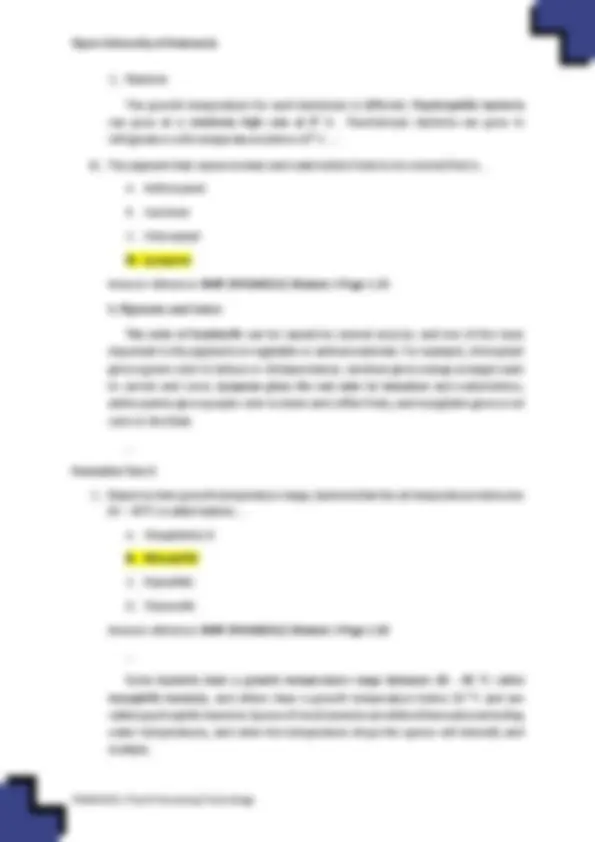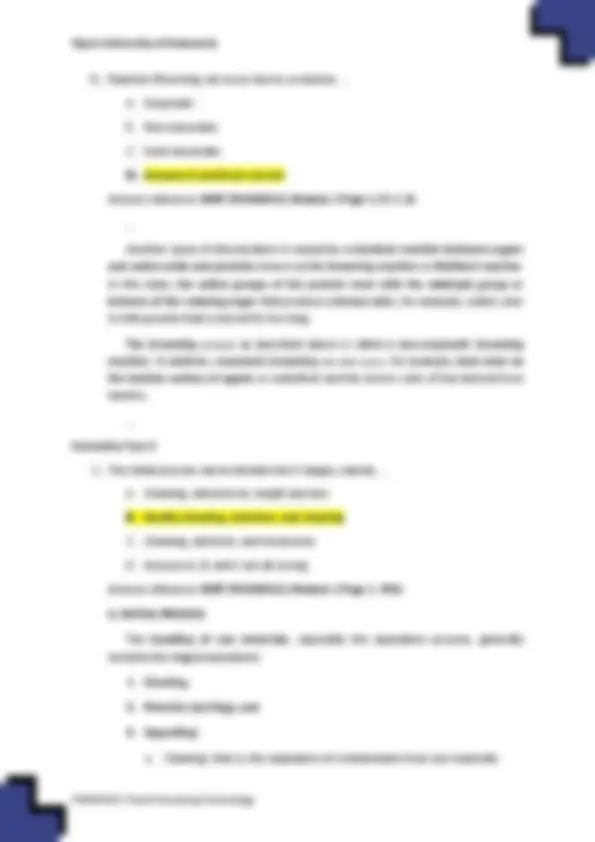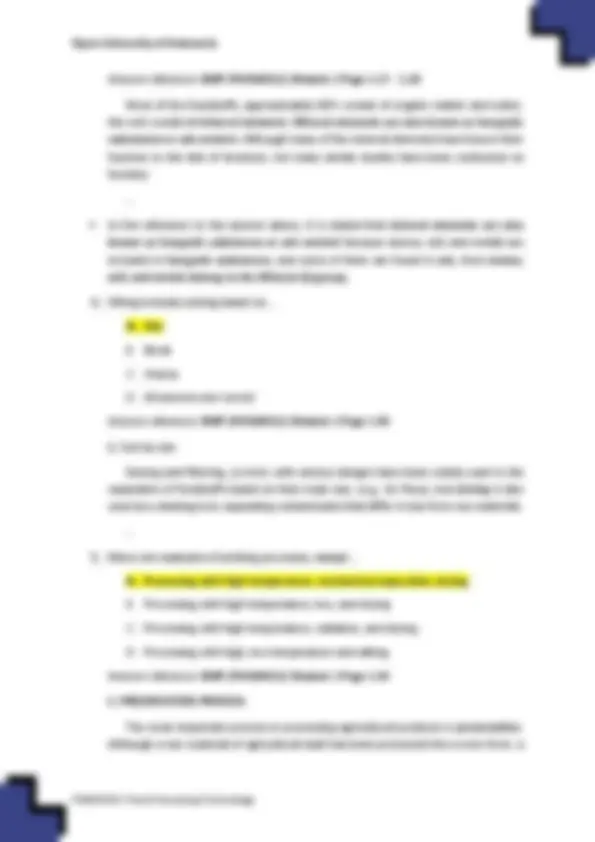








Study with the several resources on Docsity

Earn points by helping other students or get them with a premium plan


Prepare for your exams
Study with the several resources on Docsity

Earn points to download
Earn points by helping other students or get them with a premium plan
Community
Ask the community for help and clear up your study doubts
Discover the best universities in your country according to Docsity users
Free resources
Download our free guides on studying techniques, anxiety management strategies, and thesis advice from Docsity tutors
This is a formative test and answers discussion of the "Teknologi Pengolahan Pangan" lecture. This file tests knowledge about the basics of food processing technology, natural processes that occur in food, processes that can be applied to food products, etc.
Typology: Exercises
1 / 12

This page cannot be seen from the preview
Don't miss anything!







Formative Test 1
starch. Maltose will be broken down into two glucose molecules. Lactose is abundant in milk; in the body, it will be broken down into glucose and galactose.
5. Pigments and Colors The color of foodstuffs can be caused by several sources, and one of the most important is the pigments in vegetable or animal materials. For example, chlorophyll gives a green color to lettuce or chickpea leaves, carotene gives orange (orange) want to carrots and corns, lycopene gives the red color to tomatoes and watermelons, anthocyanins give a purple color to beets and coffee fruits, and myoglobin gives a red color to the flesh. ... Formative Test 2
2. Biological Damage Biological damage is damage caused by physiological damage, insects, and rodents. ...
A. Se small amount 0 2 free B. A large number of 0 2 free C. Molecularlar entrench 0 2 D. Doesn’tn't require 0 2 Answer reference: BMP [PANG4312] Module 1 Page 1. Microbes belong to the aerobic group, if to grow it requires free oxygen molecules, while those belonging to the anaerobic group can grow well even without free oxygen. Facultative groups can grow in or without the presence of free oxygen. Microbes that are microaerophilic require only a small amount of free oxygen. Some bacteria classified as aerobic can use oxygen derived from the reduction of nitrates to nitrites.
**1. Cleaning,
Answer reference: BMP [PANG4312] Module 1 Page 1.17 - 1. Most of the foodstuffs, approximately 96% consist of organic matter and water, the rest consist of mineral elements. Mineral elements are also known as inorganic substances or ash content. Although many of the mineral elements have known their function in the diet of livestock, not many similar studies have been conducted on humans. ...
new product, if it is not accompanied by a preservation process, then the product will be damaged quickly and may even become rotten. The treatments that are important for preserving foodstuffs include heating, cooling, drying, smoking, radiation, or the addition of chemical compounds, acids, sugars, and salts.